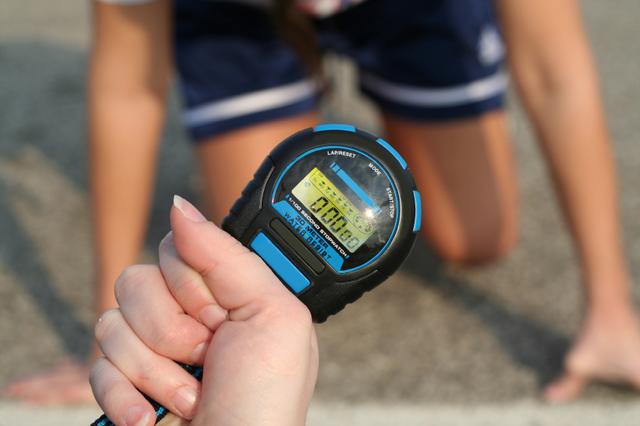| Complexity level: | 4 |
| Time required: | Additional time is required to recruit participants and obtain supplies. |
| Safety concerns: |
Overview
Reaction time is a measure of time that elapses from the moment the brain receives electrical impulses from our sense organs, to the time it elicits a response to the situation. The efficiency of this neurological process can be enhanced or compromised; alcohol, drugs, stress, lack of sleep, and aging extend response time, while repeated practice at a task reduces reaction time. There are two types of reaction times: "Simple" and "choice" reaction time. Simple reaction time measures the time between when a stimulus is received by the brain and a response is made tresulting in movement, such as pulling your finger away from a hot stove. Choice reaction time measures the time between when the brain receives a stimulus and a decision of how to respond is made. Choice reaction time can be increased through repeated practice.
Scientific Terms
Materials
- Ice
- Water
- Bowl
- 5 male participants (For minimizing impact of aging and level of health, choose only healthy participants within the same age group . They should all be of the same gender).
- Data Sheet (Provided)
- Online Reaction Time Test or similar web site (See bibliography).
- Internet access
Procedure
Preparation:
- Each participant will take the reaction time test. The Online Reaction Time Test (See resource under the bibliography section) involves a "traffic light" with a red, yellow, and green light. As soon as the traffic light changes from red to green, participants will have to click a button. The response time is measured from the time the light turns green to the time the participant clicks the button. Participants will take the original test as well as three variations of this experiment as follows:
- Original version: Participants will perform 1 practice trial only (The reaction time test allows for five trials per participant) prior to the actual test.
- First variation: Prepare a bowl of ice water. Have the participant dip his/her hand in the ice water, keeping it submerged until he/she is unable to tolerate the cold any longer. Allow the participant to dry his/her hand and immediately engage in the experiment. Allow 1 trial practice only, per participant.
- Second variation: In this variation, the participant will be exposed to a stressful situation. Have your accomplice stand behind the participant and make comments to the participant during testing such as "make sure you pay attention," "You do not seem to be taking this seriously," or "You do not seem to be concentrating." Allow 1 trial practice only, per participant.
- Third variation: Participants will follow the same procedure as in the original version but they should each take the reaction test twice. Before each test, the participant should perform a trial practice once only.
Conducting experiment:
- For each trial, record the participants? results in the data sheet.
- For the original version of the test, the first variation, and the second version, obtain the group average by totaling the response time of each participant and divide by 5.
- For the 3rd variation, the reaction test will give the averages of the first 5 trials. As participants will take the test twice, find the average of the two tests by calculating the sum of the two averages and dividing that by two. Upon obtaining the average for each participant, calculate the group average bytotalling the five averages and dividing that by five.
- Determine how reaction time was affected for each version of the experiment, using the results from the original version as the baseline.
- Under which version of the experiment was reaction time the shortest?
- When was it the longest?How did practice affect reaction time?
Original version |
Variation 1 |
Variation 2 |
Variation 3 (Attempt 1) |
Variation 3 (Attempt 2) |
Variation 3 (Average) |
|||
Participant 1 |
||||||||
Participant 2 |
||||||||
Participant 3 |
||||||||
Participant 4 |
||||||||
Participant 5 |
||||||||
Group Average |
References
"Online Reaction Time Test" http://getyourwebsitehere.com/jswb/rttest01.html
"The Human Benchmark" at http://www.humanbenchmark.com/tests/reactiontime/index.php

